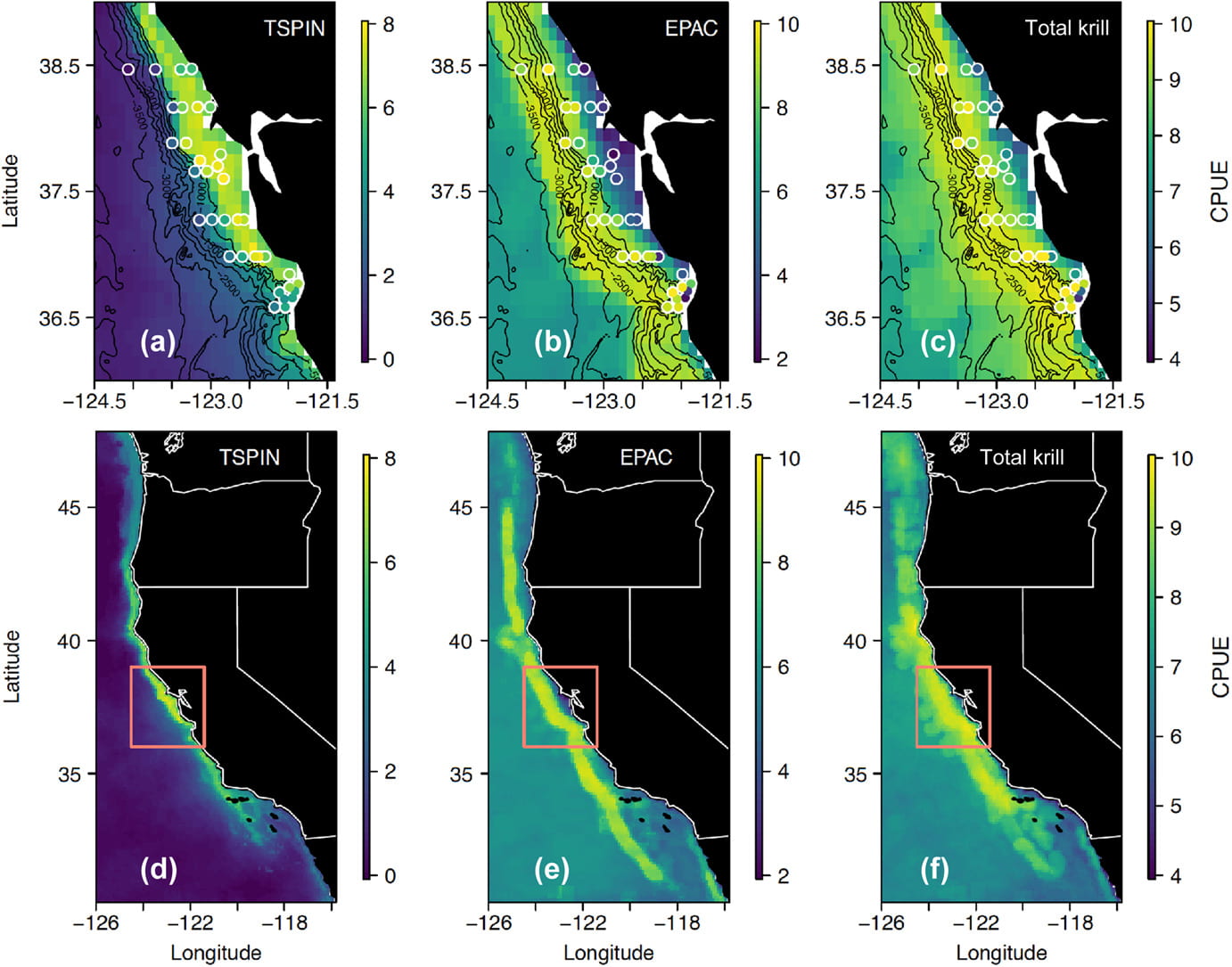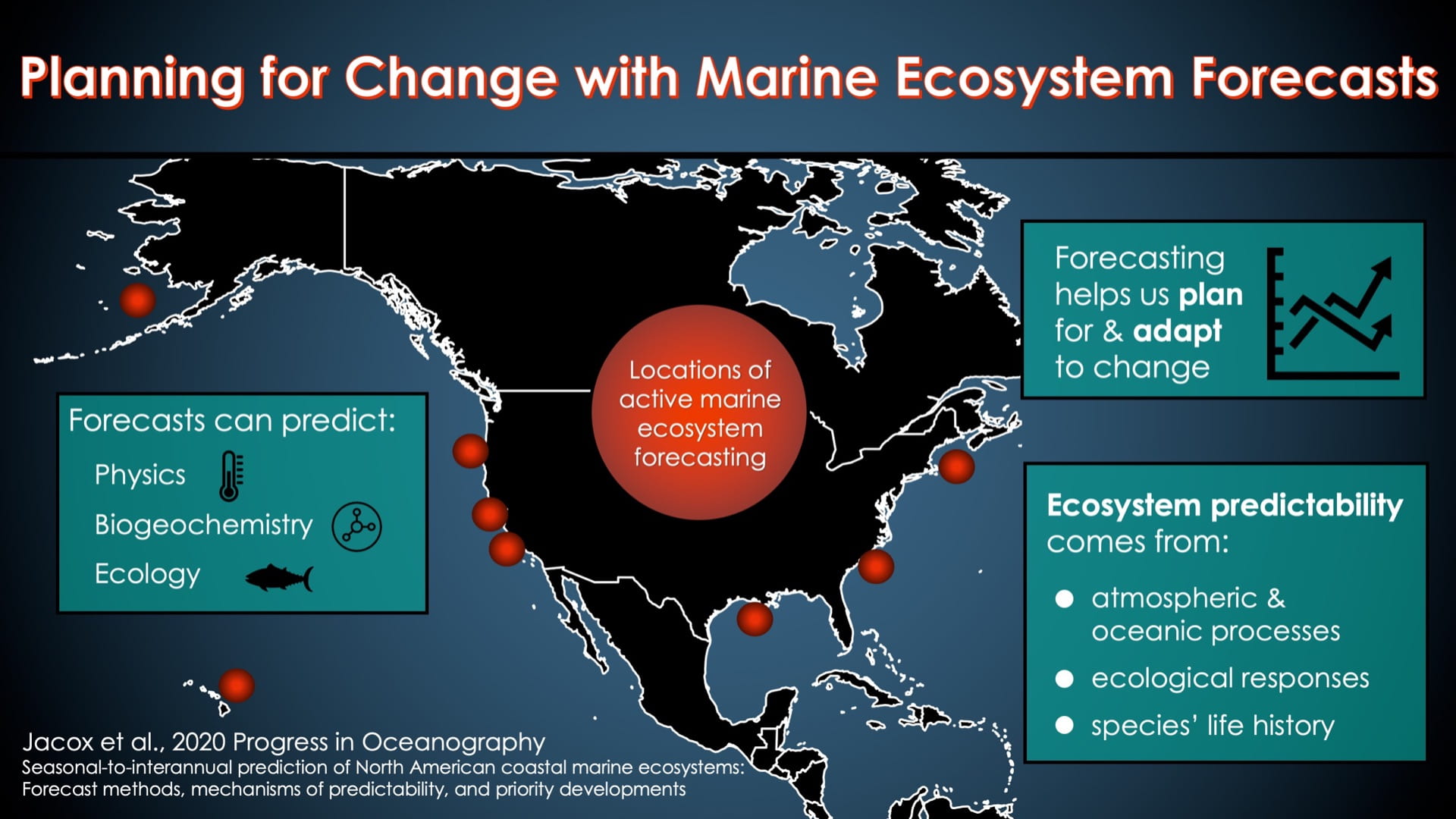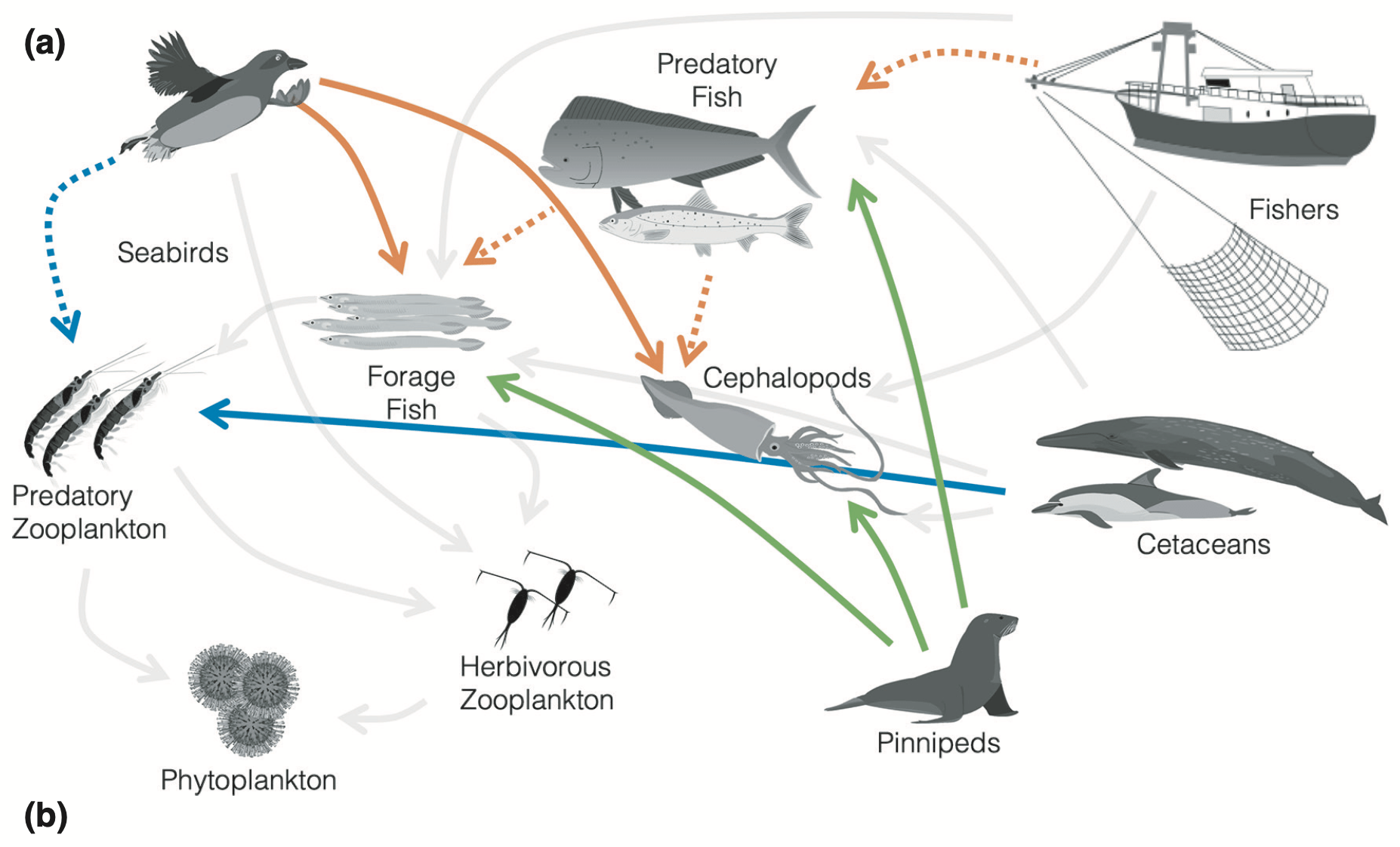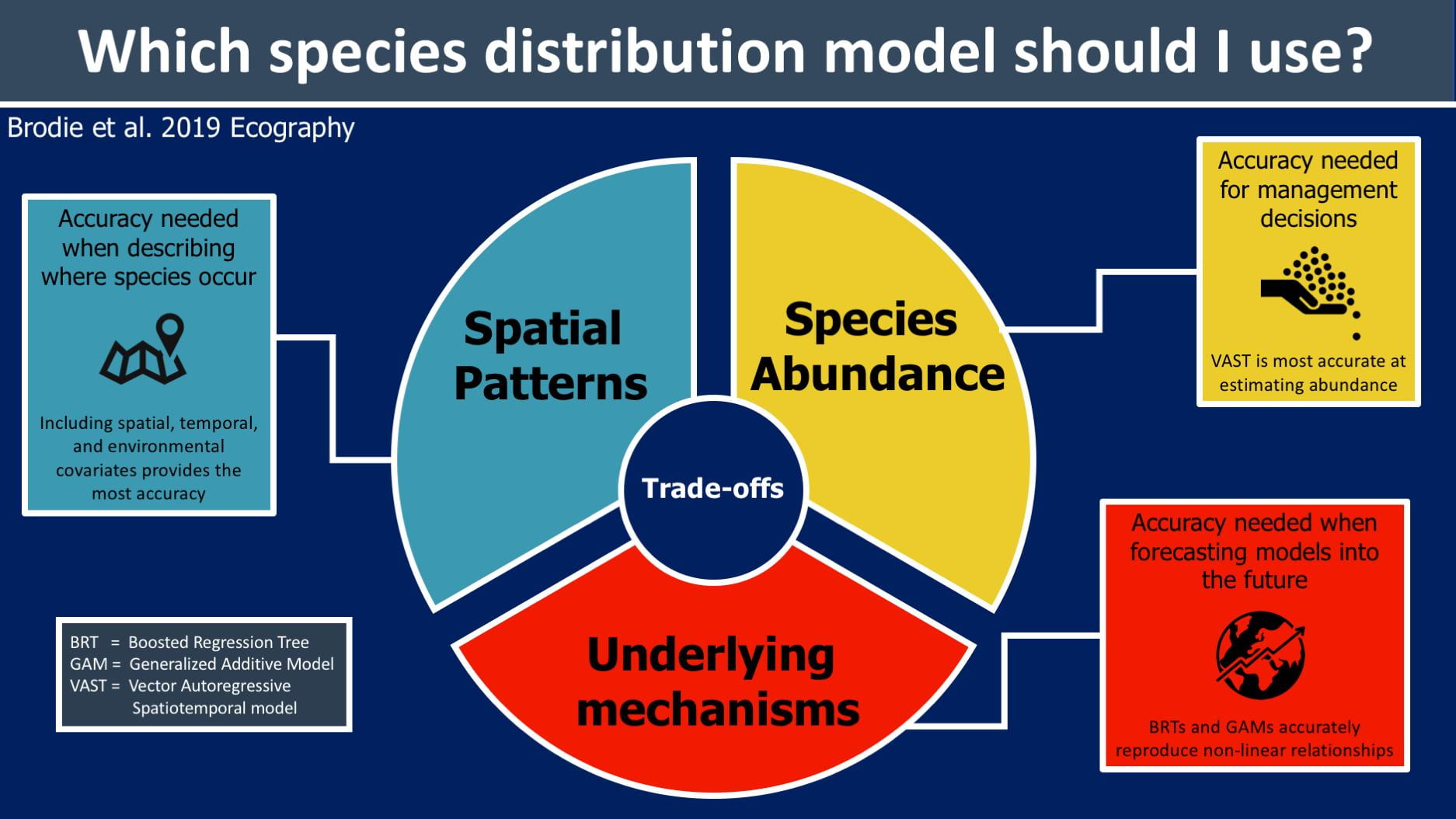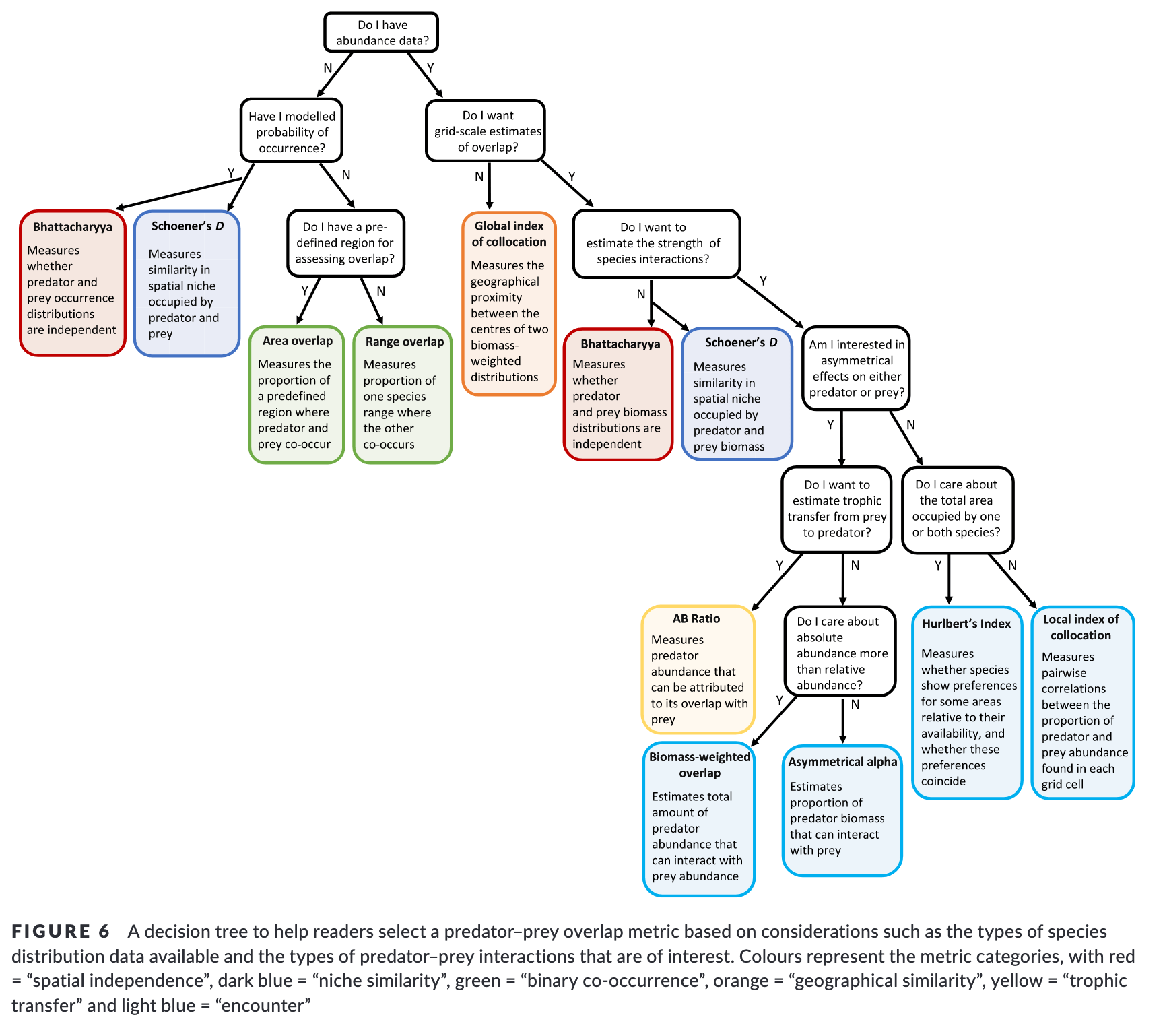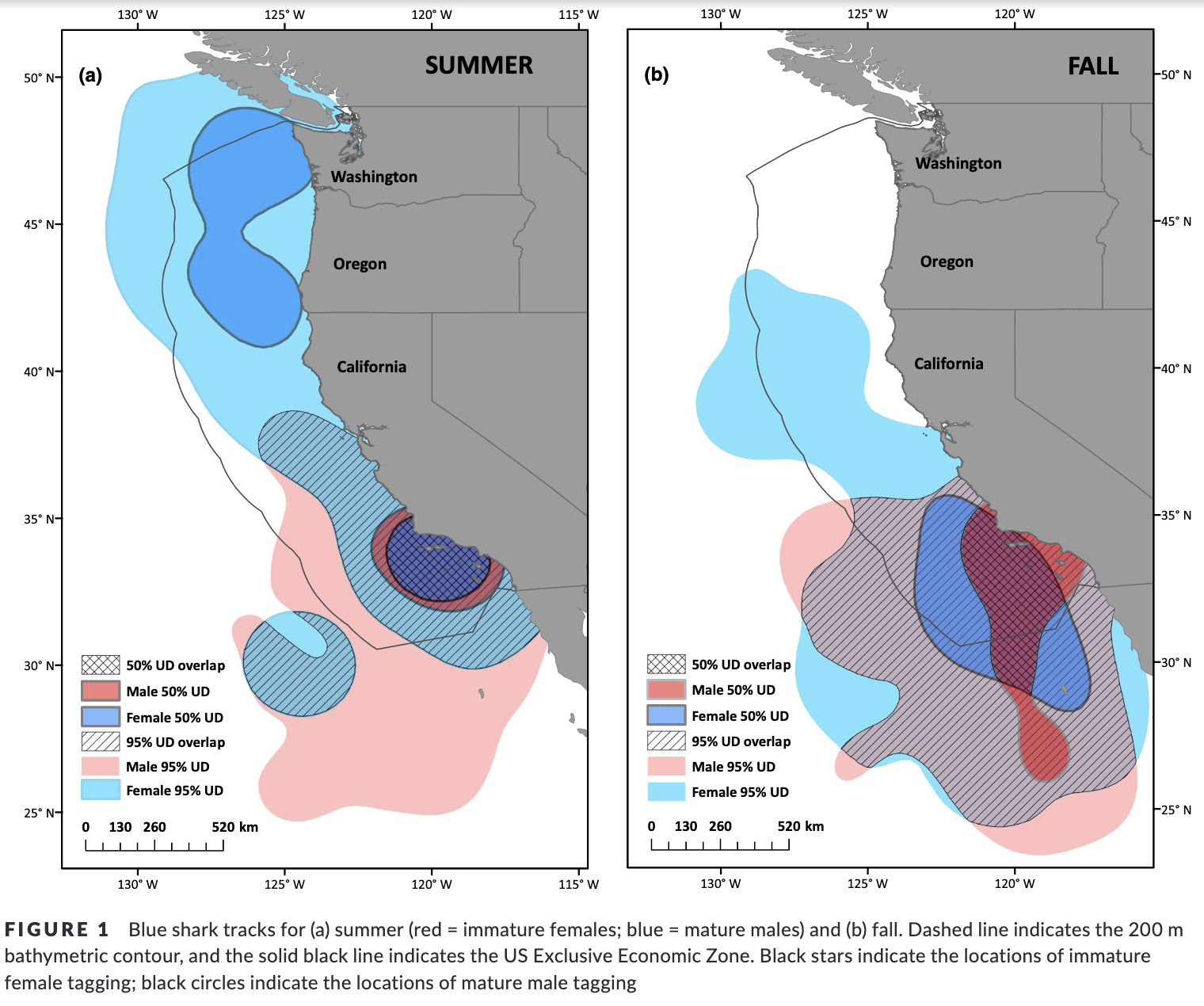Megan’s recent paper uses NOAA’s RREAS cruise data to look at combined krill biomass from net-tows and differences in habitat use between T. Spinifera and E. Pacifica in the California Current. The paper highlights the issues that arise when modeling a species complex rather than individual species habitat preferences. Getting species identification will help partition net tow data in addition to fisheries acoustic measurements of krill biomass moving forward. Krill also had broad scale response to oceanic warming from El Niño events Also not surprising, predictions of high krill biomass corresponded with top predator sightings as well.
